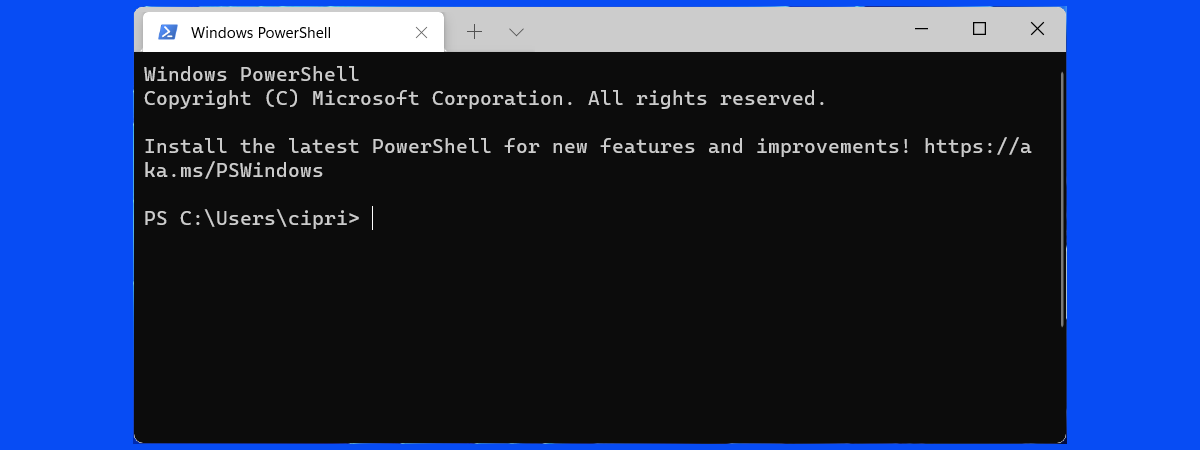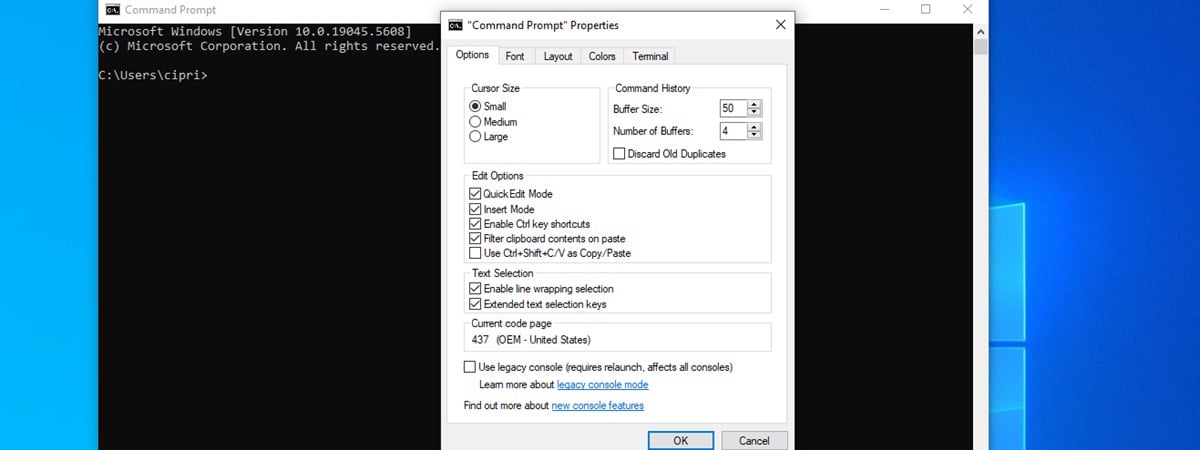
The Command Prompt, commonly known as CMD, often feels intimidating and somewhat mysterious to many Windows users. For most people, it’s the black window with white text they’d rather not deal with unless forced by circumstance. Typically, readers who find our Command Prompt tutorials on Digital Citizen are either students who need to master it for their exams or IT professionals who depend on it for their work. However, understanding the Command Prompt can be helpful to anyone using a Windows computer. If you want cmd explained, are interested in discovering its usefulness and learn a bit about its history, continue reading this article:
What is Command Prompt?
The Command Prompt (CMD) is a built-in application in Windows operating systems that serves as a command-line interpreter. Technically speaking, CMD refers to a program that allows users to issue specific text-based commands directly to the operating system. Unlike modern graphical interfaces filled with buttons and icons, the Command Prompt works purely with typed commands. When you type a command and press Enter on your keyboard, Windows executes it immediately.
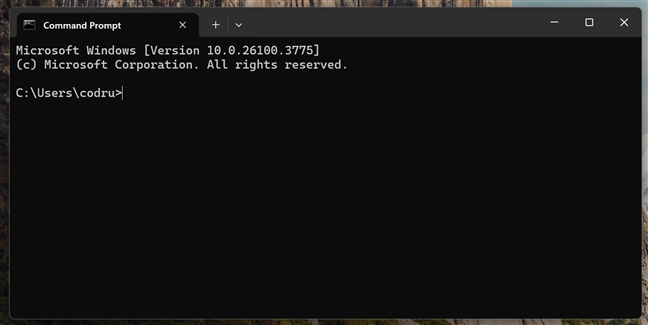
The Command Prompt in Windows 11
Instead of relying on graphical elements like sliders, checkboxes, or buttons, CMD uses only text. It might look simple and even old-fashioned, but this direct method of communication with Windows is exceptionally powerful.
What does CMD mean?
The abbreviation CMD comes from the word command, and it’s the shorthand way to launch the Command Prompt quickly. In Windows 10 or Windows 11, you can open the Command Prompt by simply typing cmd in the search box or the Run window (Win + R). Yet, besides these two, there are many other ways to run Command Prompt.
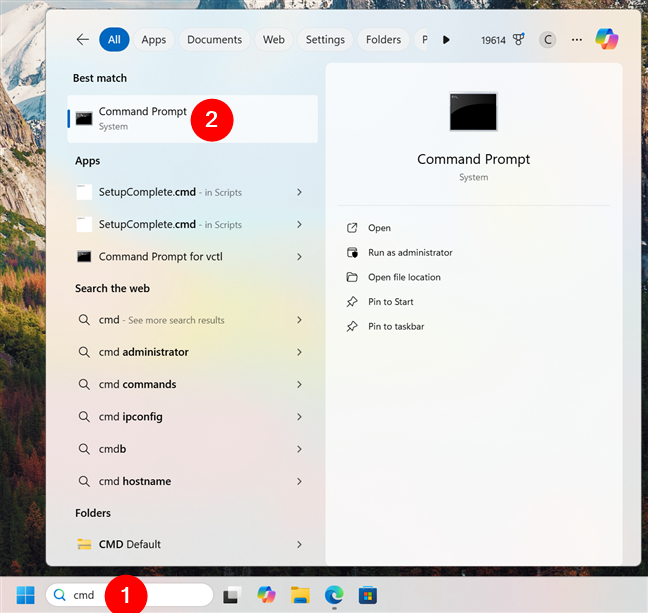
Searching for CMD and running Command Prompt in Windows 11
You might also come across the term CMD Prompt, but it’s simply another way of referring to the Command Prompt.
What is CMD used for? What can you do with Command Prompt?
While graphical interfaces are more user-friendly for day-to-day tasks, the Command Prompt excels at specific jobs that graphical tools either handle inefficiently or cannot do at all. Every operation you perform with File Explorer, from copying, moving, or deleting files to renaming folders, creating new directories, or launching applications, can also be executed in Command Prompt, often with fewer clicks and far more precision. Here’s a tutorial which explains how: 11 basic commands you should know (cd, dir, mkdir, etc.).
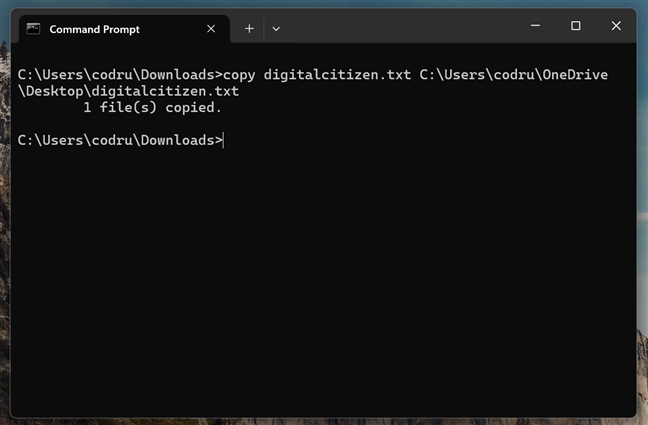
CMD can execute all the regular file management tasks in Windows
Beyond simple file handling, one of the greatest strengths of CMD is its support for advanced maintenance and system management tasks. For example, the Command Prompt is unmatched when it comes to networking and diagnostics. Commands such as ping, netstat, and ipconfig provide real-time information about your network connections, packet loss, routing paths, and interface configurations. If you’re troubleshooting a problematic Wi-Fi link, diagnosing a misconfigured DNS server, or simply needing to verify your IP address, these text-based utilities will give you immediate feedback that a tool with a graphical user interface (GUI) may hide or delay.
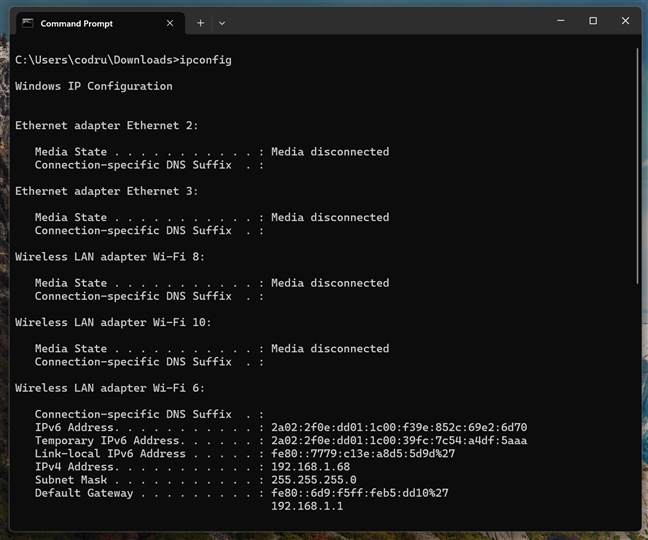
Checking the network configuration in Command Prompt
For advanced system management, CMD offers direct access to utilities that would otherwise require multiple clicks or might not even be available in standard menus.
You can use chkdsk to scan and repair file-system errors, diskpart to partition and format drives at a low level, and sfc /scannow to verify the integrity of core Windows files.
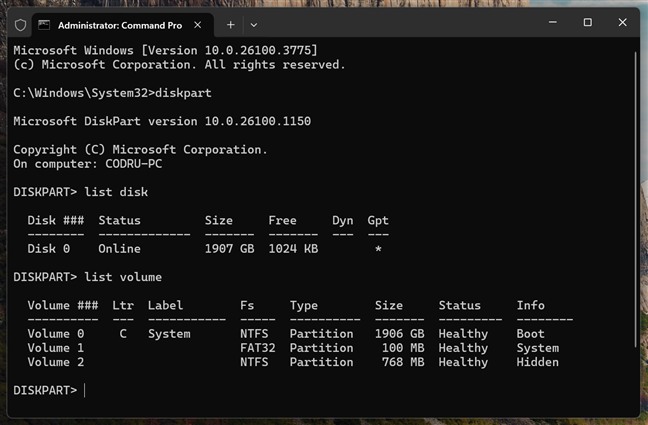
Using DISKPART to work with drives in CMD
A handful of commands let you install or remove Windows features, add or delete Registry keys, or control running processes without ever opening Task Manager. With appropriate permissions, you can even alter environment variables, configure user accounts, and adjust firewall rules.
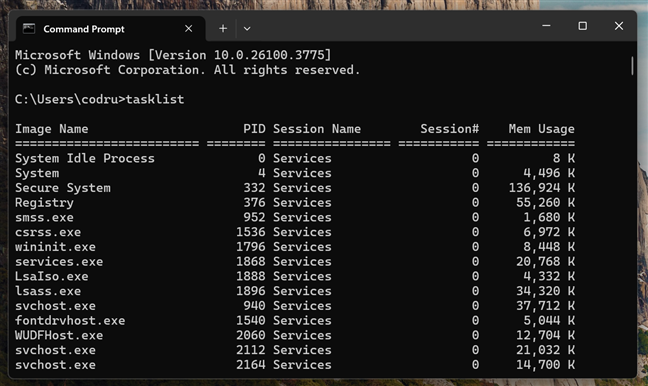
Using tasklist in CMD to see the processes currently running
The list is extremely long, so if you want to know whether a specific command for a particular task exists, I recommend you look through Microsoft’s full list of Windows Commands.
Who invented the Command Prompt, and when?
Command Prompt’s history starts with MS-DOS, an operating system created by Microsoft in 1981, more than 40 years ago. MS-DOS didn’t have a graphical user interface, and most commands you could run were relatively simple. At that time, the Command Prompt didn’t exist, but its ancestor, Command.com, did.
Command.com was the default command-line interpreter in MS-DOS and the only user interface available in that operating system. Command.com was present in a few Microsoft operating systems, from Windows 95 to Windows 98 SE and Windows ME.
Later, when Microsoft released Windows NT in 1993, the Command Prompt as we know it today was born. Command Prompt (cmd.exe) offered compatibility with the old commands available in Command.com from MS-DOS, making it easier for companies to adapt and migrate to the new operating system.

MS-DOS Prompt in Windows 98 SE
Although new commands were added with each version, the Command Prompt maintained that compatibility throughout the years. The following operating systems - Windows 2000, Windows XP, Windows Vista, Windows 7, Windows 8, Windows 10, and Windows 11 - still have the Command Prompt, and everything works pretty much the same way.
What does the future hold for the Command Prompt?
The Command Prompt has had a long and meaningful life. A few years ago, when Microsoft decided to replace the Command Prompt shortcuts in the WinX menu with Windows Terminal, publications and users were concerned that the Command Prompt might not live much longer.
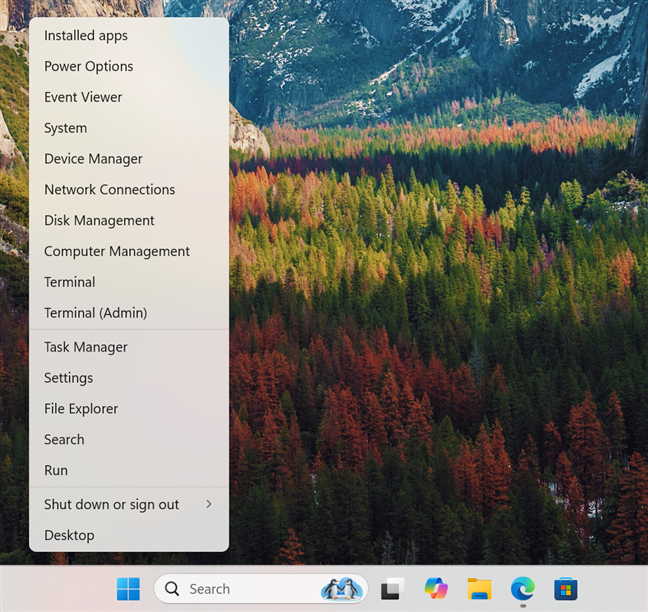
The WinX menu replaced Command Prompt shortcuts with Terminal shortcuts
However, Rich Turner (Sr. Program Manager, Windows Console & Command-Line) from Microsoft published a post called Rumors of Cmd’s death have been greatly exaggerated, in which he told the entire world that:
Thus, CMD remains a valuable tool for users who prefer a lightweight, fast, and highly effective interface for managing Windows.
Are you using Command Prompt?
Now you know what CMD is, its meaning, and why it remains relevant today. Do you use Command Prompt? If so, what tasks do you usually perform with it? Do you prefer it to the more modern PowerShell? Share your thoughts or ask questions in the comments below, and let’s talk about how CMD makes your experience better (or worse?) in Windows.


 01.05.2025
01.05.2025 
